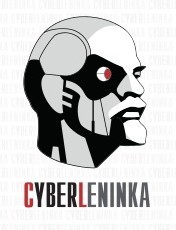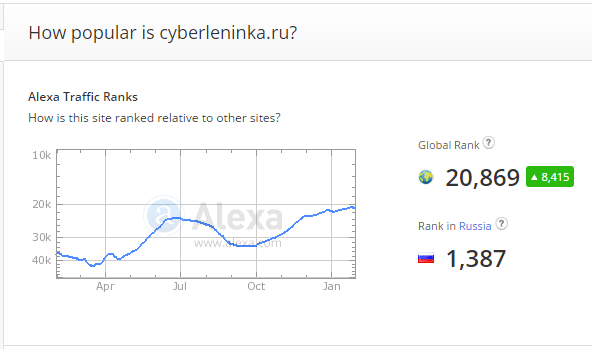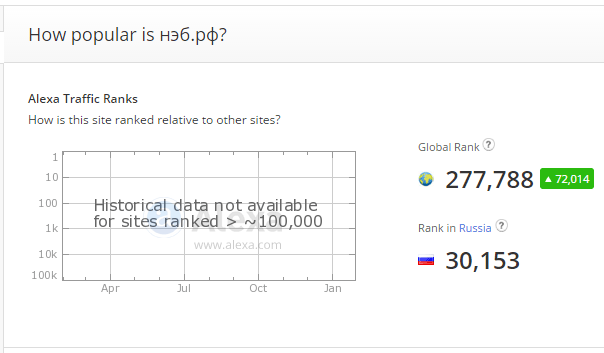What is more effective: the CyberLeninka scientific library or the state-owned NEB for 1 billion rubles?
 The backfill question: which of the two electronic libraries wins in terms of accessibility, efficiency, indexing in search engines, etc.— “ CyberLeninka ”, operating according to the open access model, or the National Electronic Library (NEB), a project of the Ministry of Culture of the Russian Federation with a budget of over billion rubles?
The backfill question: which of the two electronic libraries wins in terms of accessibility, efficiency, indexing in search engines, etc.— “ CyberLeninka ”, operating according to the open access model, or the National Electronic Library (NEB), a project of the Ministry of Culture of the Russian Federation with a budget of over billion rubles? At the request of the Internet Initiatives Development Fund, the Central Economics and Mathematics Institute of the Russian Academy of Sciences conducted a special study and published a report evaluating the economic effect of the implementation of the NEB project, comparing it with the same CyberLeninka.
The comparison results are easy to guess.
The National Digital Library is a project developed by the Russian State Library (RSL).
“A brief analysis of the project description shows that the digital version of the NEB inherited from the classic,“ paper ”version of the RSL some features that can hardly be called atavism,” the report said. “The concept of virtual reading rooms or the issuance of e-books offline look like an attempt to transfer technology from the paper age to the electronic world, where more efficient (less costly) methods of working with information have been developed for a long time.”
CyberLeninka supports the dissemination of knowledge on the Open Access model, providing free online access to scientific publications in electronic form, which, depending on agreements with the copyright holder, are licensed under a Creative Commons Attribution (CC-BY).

CyberLeninka also exports materials to the open international scientific information repositories Google Scholar, OCLC WorldCat, ROAR, BASE, OpenAIRE, RePEc, Socionet and others under the OAI-PMH protocol.
As a result, CyberLenink seems preferable. Not surprisingly, her audience is an order of magnitude (!) Larger than that of the NEB.


The number of requests for CyberLeninka content significantly exceeds the number of requests for the NEB, despite the difference in the scale of the projects.


The reason for the popularity of CyberLeninka is the distribution of content using the open access model. The authors of the report directly indicate this:
The activity of the library is based on the principle of access to information. The copyright system is based on the principle of restricting access to information. The best way to protect information is to have no access to information. Obviously, some compromise is required between the “ease” of access, on the one hand, and the enforcement of restrictive rules, on the other.
In the case of the NEB, we have, in practice, the ultimate case of the implementation of the "prohibitive" principle of access to information. UX left reading and excluded almost all other functions of working with information - copying, recording or printing, distribution.
Specialists of the CEMI RAS also note that it is difficult for private electronic libraries to work with closed paid content.
While the NEB is a state-wide project declaring universal coverage of all reading needs for all categories of citizens, CyberLenink is a private initiative that works primarily (if not exclusively) with scientific literature. NEB declares support for both open access and access to copyrighted content. CyberLenink only supports the open access model.
The first and second circumstances are closely related. If the content is not “burdened” with any special burdens, therefore, the project of creating and operating an electronic library is more “easy” because it does not contain mechanisms for working with burdens. The implementation of such mechanisms, apparently, is a prohibitive barrier to private initiatives to create electronic libraries that refuse to interact with structures that protect copyright. The reasons for this failure are complexity, opacity and, in technical terms, the lack of an API - that is, a technical interface - to the mechanisms for accounting for copyright and cash payments. There are two ways for private initiators - either to work with free content, or to embark on the path of “piracy”.
NEB provides access to both copyrighted content and free content. To implement access to copyrighted content, specially written software is used, which must be installed on the client terminal (PC, smartphone). The software created for protection significantly limits the set of familiar operations available to the user: it allows viewing documents with a limit on the number of documents viewed per unit of time, without the ability to print, copy or save fragments of a document to the device, refuses to work with some third-party application programs ( including Microsoft Office), and finally, it requires offline user registration, although you can pay for the service after registration, online.
conclusions
“In the current situation, when more and more education components are provided for a fee, and the scope of free education is narrowing, the opportunities for self-education are increasing, including free access to educational materials, primarily books. Textbooks, teaching aids, reference materials, as well as literary works studied at the school should be as close as possible to the consumer. If the state manages to ensure free access to this array of useful information, one will significantly improve its image in the eyes of ordinary citizens, whose children study domestically in ordinary schools, as well as all those who are concerned about the availability of knowledge for all categories of citizens, ”the authors of the study say .
Interestingly, the report also mentions the positive influence of torrent trackers, through which free access to works of art is provided “to preserve the common cultural space” of Russia and Russian-speaking users in other countries (p. 159).
Report “Development of the project strategy of the Public Domain and assessment of the economic effect of its implementation”
